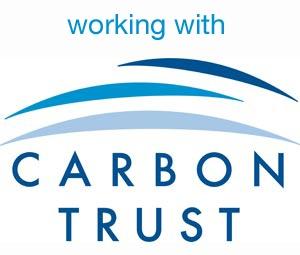In the ever-evolving landscape of property development and management in London, sustainability has become a key focus. While much attention is often given to energy efficiency and carbon reduction, water conservation is an equally critical aspect of sustainable building practices. One of the essential tools in achieving this is water calculations. But what exactly are water calculations, and why are they so important for London properties? This blog will explore the significance of water calculations and their impact on property development and sustainability in the capital.
What Are Water Calculations?
Water calculations involve assessing the predicted water usage of a property, typically measured in litres per person per day. This assessment is crucial for ensuring that new developments meet the required water efficiency standards set by building regulations. These calculations consider various factors, including the efficiency of fixtures and fittings, such as taps, showers, toilets, and appliances, to estimate the overall water consumption of a property.
In London, where water resources are under increasing pressure due to population growth and climate change, water calculations play a vital role in promoting responsible water use and sustainability.
Why Are Water Calculations Important for London Properties?
1. Compliance with Building Regulations
In the UK, building regulations set specific targets for water efficiency in new homes. For example, Part G of the Building Regulations stipulates that the maximum allowable water consumption for new residential properties is 125 litres per person per day. In London, however, local planning authorities often impose stricter limits, typically around 105 litres per person per day, as part of their commitment to sustainability. To meet these requirements, accurate water calculations are essential.
Ensuring compliance with these regulations is crucial for obtaining planning permission and avoiding potential legal issues. Developers and builders must demonstrate that their projects meet or exceed the required standards, and water calculations are the primary method for doing so.
2. Sustainability and Environmental Responsibility
London faces significant challenges when it comes to water supply, with the city’s growing population putting increasing strain on water resources. Climate change further exacerbates this issue, leading to concerns about future water scarcity. By conducting thorough water calculations and implementing water-efficient designs, developers and homeowners can contribute to the sustainable management of water resources.
Reducing water consumption not only helps protect the environment but also aligns with broader sustainability goals, including reducing the carbon footprint associated with water use and treatment. In a city as environmentally conscious as London, demonstrating a commitment to water efficiency can enhance the reputation of property developments and appeal to eco-conscious buyers and tenants.
3. Cost Savings
Water-efficient properties can lead to significant cost savings for homeowners and tenants. Lower water consumption means lower water bills, which is particularly important in London, where utility costs are among the highest in the UK. Over time, the savings on water bills can add up, making water-efficient homes more attractive from a financial perspective.
For landlords and property managers, investing in water-efficient fixtures and appliances can also reduce maintenance costs associated with water usage, such as plumbing repairs and appliance replacements. This not only makes the property more cost-effective to manage but also enhances its long-term value.
4. Impact on Property Value and Marketability
As sustainability becomes a more significant factor in the property market, homes and buildings with strong water efficiency credentials are increasingly in demand. Buyers and tenants in London are looking for properties that not only meet their needs but also align with their environmental values. A property that has been designed with water efficiency in mind can stand out in a competitive market, potentially leading to higher sale or rental prices.
Additionally, properties that meet or exceed water efficiency standards are likely to be more resilient to future regulatory changes, protecting their value and marketability in the long term.
5. Futureproofing Against Water Scarcity
With climate change and population growth posing ongoing challenges to London’s water supply, future-proofing properties against potential water scarcity is essential. Water calculations help identify areas where water usage can be minimised, ensuring that properties are prepared for potential restrictions or changes in water availability.
By incorporating water-efficient designs and technologies from the outset, developers and homeowners can create properties that are better equipped to handle future water-related challenges. This not only enhances the sustainability of the property but also ensures its viability in a changing climate.
5. Supporting London’s Sustainability Goals
London has ambitious sustainability goals, including becoming a zero-carbon city by 2050. Water efficiency is a critical component of these goals, and water calculations are a key tool in achieving them. By adhering to strict water usage targets and implementing water-efficient designs, property developers and homeowners can play a vital role in supporting London’s broader environmental objectives.
Moreover, contributing to the city’s sustainability goals can also enhance the reputation of property developers and owners, positioning them as leaders in the field of sustainable development.
How to Conduct Water Calculations for Your London Property
To conduct accurate water calculations, you’ll need to work with a qualified assessor or use specialised software that takes into account the efficiency of all water-using fixtures and appliances in the property. The calculation process typically involves:
- Assessing water usage: This includes estimating the water consumption of taps, showers, toilets, and other appliances based on their flow rates and usage patterns.
- Considering occupancy: The number of people living in the property will impact the overall water consumption.
- Evaluating additional factors: This may include the use of rainwater harvesting systems, greywater recycling, and other water-saving technologies.
Once the calculations are complete, the results will indicate whether the property meets the required water efficiency standards. If the property does not meet the standards, recommendations can be made to improve water efficiency, such as installing low-flow fixtures or upgrading to more efficient appliances.
Conclusion
Water calculations are an essential aspect of sustainable property development and management in London. By ensuring that properties meet strict water efficiency standards, developers, builders, and homeowners can contribute to the responsible use of water resources, reduce costs, and enhance the value and appeal of their properties.
In a city where water scarcity is an increasing concern, understanding and implementing water calculations is not just a regulatory requirement—it’s a crucial step toward creating a more sustainable future. Whether you’re building a new home, renovating an existing property, or managing a portfolio of properties, prioritising water efficiency through accurate water calculations is a smart and responsible choice.
If you’re planning a new project or considering ways to improve your property’s water efficiency, now is the time to engage with a qualified professional who can help you navigate the water calculation process and ensure your property meets all necessary standards.












